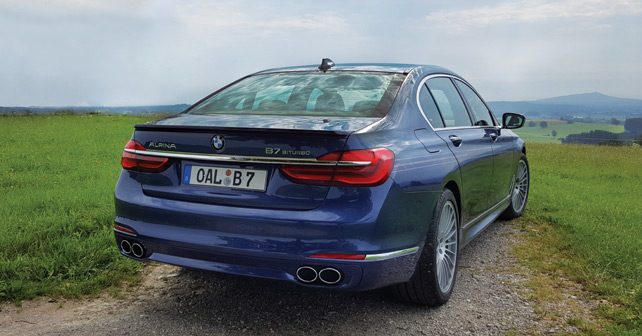
Jens does 317km/h on the Autobahn and contemplates his love for pick-ups – not both at the same time mind you.
There’s really nothing like the Autobahn. The speed on Germany’s legendary high-speed road network is still unrestricted on principle. Yes, there are limits now in congested areas or on tight sections – but they don’t even amount to half the kilometres of the total network. These roads are very safe too. Accidents and deaths are rare, and the German Autobahn system fares extremely well when compared with speed-limited freeway systems in other countries.
The Autobahn serves the purpose of traffic in an ideal way – to move goods and people from point A-to-B, and fast! And, for an enthusiasts like myself, there’s more to it than just utility. Covering distances quickly, maxing out your car’s capabilities and disappearing into the horizon is so much more rewarding than running around in circles on a racetrack and crawling home on a speed-limited motorway while trying to stay awake.
Last month, I appreciated the German system even more than usual. I was behind the wheel of the Alpina B7 Biturbo – a 608-horsepower derivative of the BMW 7 Series that’s capable of a full 330km/h. Thus, the B7’s comfortably faster than the Bentley Continental Flying Spur, the Porsche Panamera Turbo – and even BMW’s own, upcoming, M760i, which will be governed at 305km/h. Personally, I only managed 317km/h this time around. Believe me, it’s a magical experience.
The B7 is not just great in a straight line, but it also handles exceptionally well – and it comes with all the luxury of the regular 750i xDrive on which it is based. And it keeps its unique style, with an aero kit, exclusive colours, and those Alpina decals that haven’t changed in almost 50 years.
In the mid-1980s, Alpina’s founder, Burkard Bovensiepen, put considerable resources in the political fight against a speed limit on the Autobahn. Back then, Germany was on the brink of losing this freedom. Well, I feel fortunate to be reaping the benefits today...
A love for pick-ups
I’ve been fascinated with pick-up trucks ever since I spent a year as a high school exchange student in the American Northwest. Back then, the C/K pickup by GM was the coolest and cleanest truck on the market. I vividly remember taking the Chevrolet 454 SS for an extended test drive. In 1993, Dodge took the market by surprise with its full-size Ram truck, with retro-futuristic design and an available 8.0-litre V10 – the same basic engine that was also in the Dodge Viper. A friend of mine was so fascinated by the breakthrough design that he switched from a Mercedes S-Class into a Ram.
Today, there are several fascinating pickup trucks on the market – the awesome Ram Rebel. The Dodge moniker has been dropped by Sergio Marchionne. In his amazing wisdom, he decided to turn Ram into a brand – just as he tried with SRT. There’s also the Ford Raptor, as well as variations of GM’s full-size pickups with their 6.2-litre V8s. But as much as I like the excess of American full-size trucks, I was even more impressed with the Volkswagen Amarok that I drove a few weeks ago. It’s designed primarily for Europe and South America, and is considered a mid-size truck – although it seems positively huge anywhere outside of the US.
From behind the wheel, the updated Amarok V6 TDI feels smooth and luxurious. In fact, the driving experience is similar to that of a Touareg – making it easily the most sophisticated pick-up on the market. But the Amarok has a downside – it’s expensive to make. And that prevents VW from entering a lot of emerging markets with it, as there’s no way it could compete with the current offerings by Toyota or Nissan in terms of price.
In fact, I wouldn’t be surprised if VW teamed up with one of the established truck makers to make a product for low-cost markets. And there would be a precedent – from 1989 to 1997, Volkswagen rebadged and built the Toyota Hilux (which forms the basis for the Fortuner) as the VW Taro.























Write your Comment